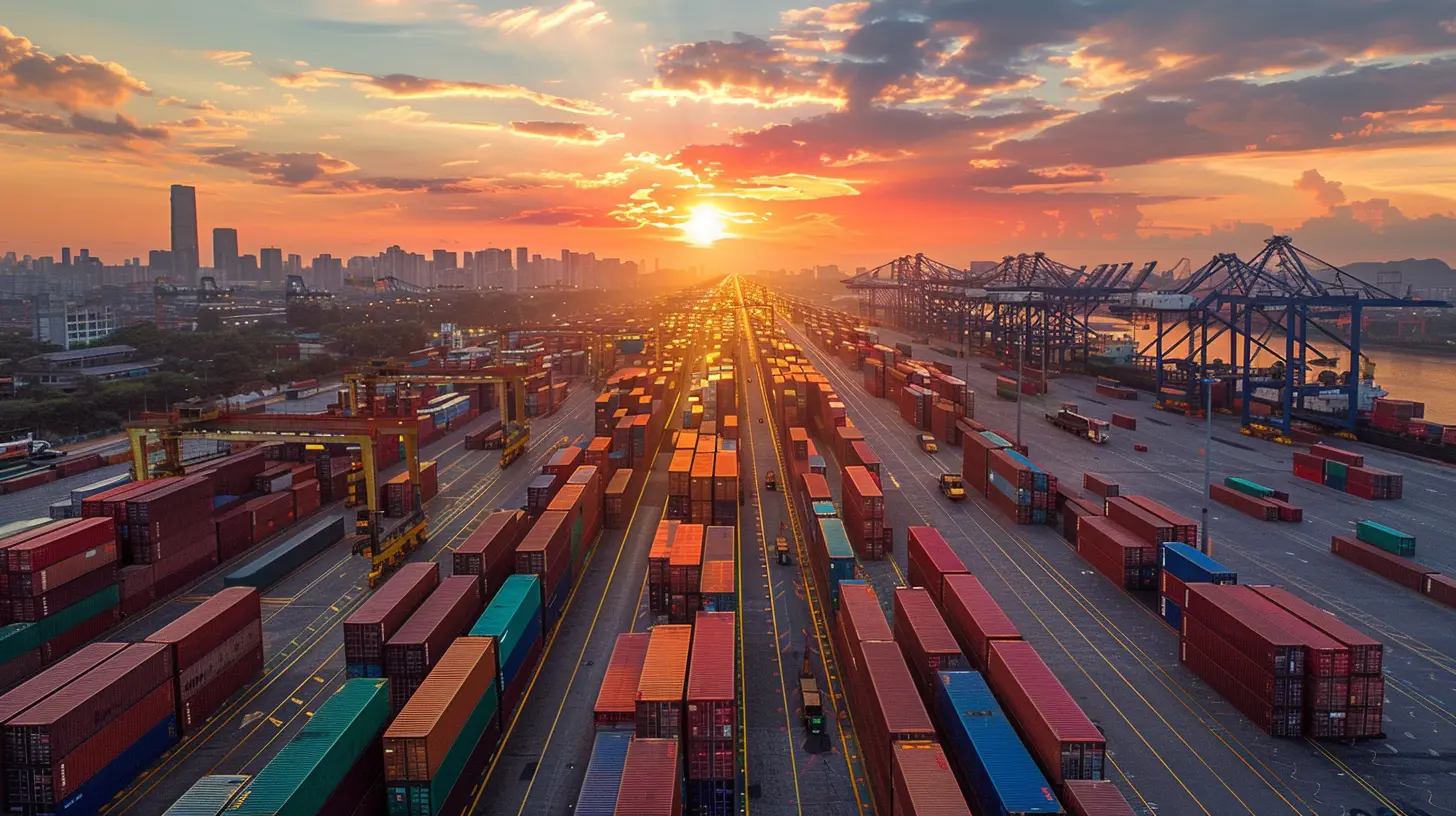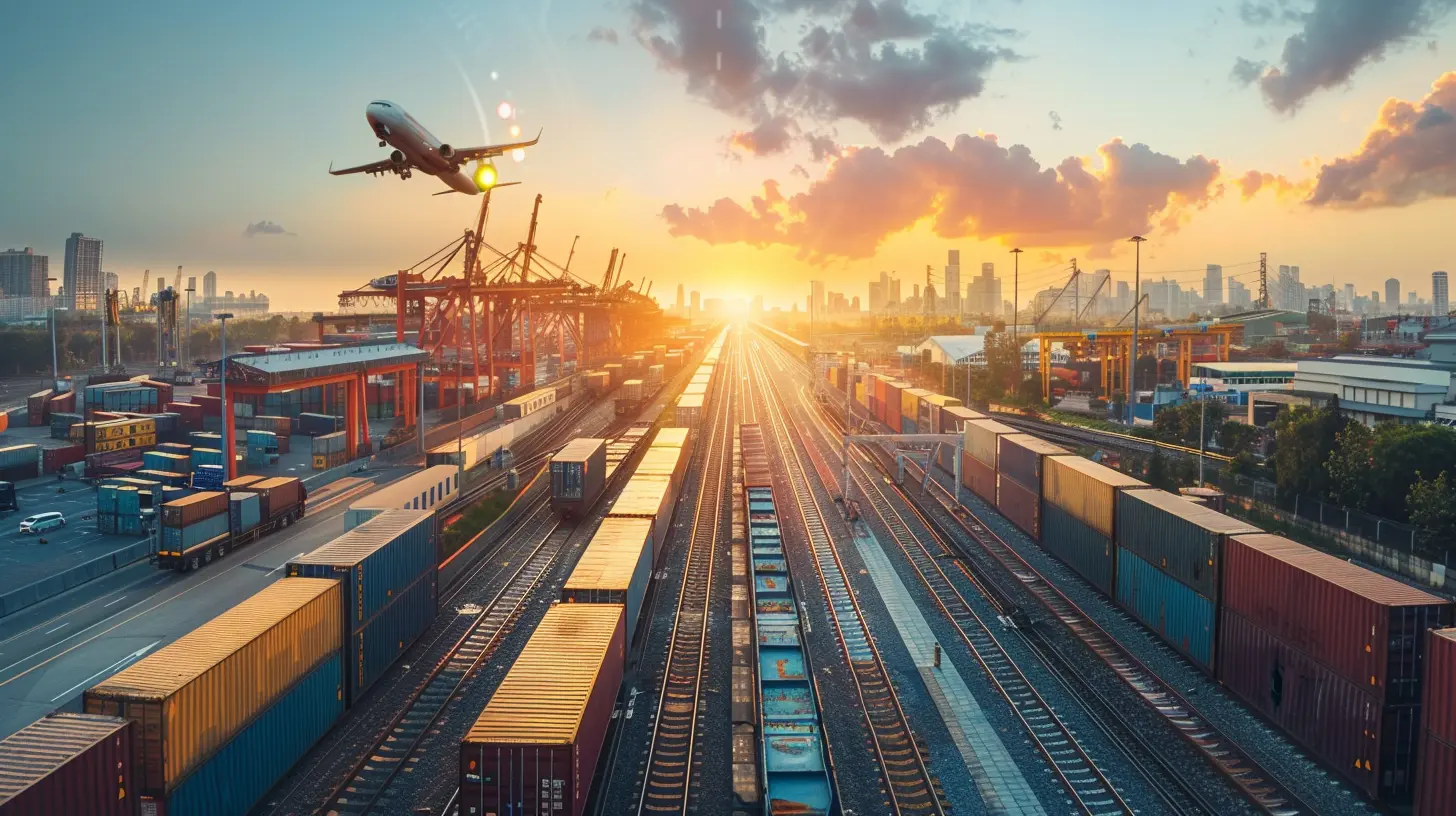Addressing Supply Chain Challenges in the Age of Rapid Innovation
15 November 2025
Let’s face it—supply chains today feel a bit like high-wire acts. One wrong move, one unexpected disruption, or one leap in technology, and the whole balance can shift. As businesses hustle to keep up with rapid innovation, supply chains are under more pressure than ever before. From AI-powered logistics to changing consumer expectations, we’re living through a whirlwind of change that’s reshaping how products are moved, stored, and delivered.
But don’t worry—this isn’t another doomsday post. Instead, we’re diving into the real challenges (and yes, the opportunities too) that come with running a supply chain in this fast-paced era. Whether you're a startup founder, a supply chain manager, or just someone curious about how stuff gets from point A to B, there’s something here for you.
Why Innovation Is Putting Pressure on Supply Chains
Innovation is a double-edged sword. On one side, it's making things smarter, faster, and more efficient. On the other, it's shaking up traditional systems — and not always in a gentle way.Think about it. In the past decade, we’ve seen:
- The rise of e-commerce and same-day delivery expectations,
- The growth of smart warehouses and IoT devices,
- Advanced data analytics driving decision-making,
- AI and machine learning transforming logistics forecasting.
All of this sounds great, right? But here’s the twist: these tech leaps create new headaches, especially for supply chains that are stuck using outdated systems and manual processes.
So what's causing all the friction? Let’s break it down.
The Biggest Supply Chain Challenges Today
1. Lack of Real-Time Visibility
Ever tried to track a package only to be told “in transit” with zero details? Now imagine that frustration scaled across thousands of orders, warehouses, and transport lines. That’s what many businesses deal with every day.Without real-time visibility, it’s nearly impossible to make informed decisions. You’re flying blind—and in a fast-moving environment, that’s a disaster waiting to happen.
2. Legacy Systems That Can’t Keep Up
Here’s the thing: a lot of companies are running on outdated tech. We're talking spreadsheets, paper logs, and software from the early 2000s. These systems weren’t built for rapid innovation or today’s data-heavy demands.Trying to plug modern tools into these systems? It’s like putting a turbo engine into a horse-drawn carriage—things are bound to break.
3. Labor Shortages and Skills Gaps
Technology’s evolving fast, but workers need to keep up too. There’s a growing gap between the digital tools supply chains use and the skills people actually have. Many warehouses and logistics firms are struggling to hire people who can operate advanced software or robotic systems.Add in the ongoing labor shortages, and you’ve got a serious talent crunch.
4. Global Disruptions and Fragile Networks
If we learned anything from the pandemic, it’s that global supply chains are fragile. A single factory shutdown in Asia or a container stuck in a port can ripple across the world. And it’s not just pandemics—trade wars, natural disasters, and political unrest can send shockwaves too.When things are moving rapidly, supply chains need to be flexible. Sadly, most are anything but.
5. Rising Customer Expectations
Customers want everything faster, cheaper, and greener. And they want it now.From Amazon Prime to carbon-neutral shipping, consumer demands are reshaping how companies think about logistics. If your supply chain isn’t up to snuff, you run the risk of losing business—simple as that.
Strategies to Tackle Modern Supply Chain Challenges
Alright, enough doom and gloom. Let’s talk solutions. The good news? With the right mindset and tools, businesses can rise to the challenge.1. Embrace Digital Transformation
This isn’t just a buzzword—it’s a must.If you’re still using spreadsheets and post-it notes to track shipments, it’s time to upgrade. Cloud-based ERP systems, AI-powered forecasting tools, and blockchain for transparency are changing the game.
Think of it like switching from dial-up internet to 5G. Everything’s faster, sharper, and more connected.
Action Steps:
- Invest in cloud-based inventory and order management tools.
- Use AI to optimize demand forecasting.
- Integrate IoT sensors to track goods in real-time.
2. Build Resilience, Not Just Efficiency
For years, supply chain strategies focused on cutting costs and squeezing out inefficiencies. But now, resilience is the new buzzword—and for good reason.It’s not just about speed; it’s about flexibility. Can your supply chain bounce back quickly from a disruption? Can you pivot when a supplier goes offline?
Action Steps:
- Diversify your suppliers (don’t rely on just one).
- Maintain safety stock or buffer inventory.
- Use local or nearshore options to reduce reliance on global sourcing.
3. Upskill Your Workforce
Don’t overlook your people.Tech is useless if no one knows how to use it. Training your team to work with digital tools, automation, and data analytics can turn them into your greatest assets.
Think of it this way: you wouldn’t give someone a Ferrari without teaching them how to drive stick, right?
Action Steps:
- Offer ongoing training in digital tools and logistics software.
- Partner with tech providers for staff onboarding.
- Encourage a culture of continuous learning.
4. Collaborate Across the Ecosystem
Supply chains don’t operate in silos. You’ve got suppliers, manufacturers, logistics providers, retailers—and everyone needs to be on the same page.The more connected your network, the better you can manage disruptions. That means sharing data, syncing systems, and communicating clearly.
Action Steps:
- Use supply chain collaboration platforms.
- Set up regular communication rhythms with partners.
- Develop shared KPIs to keep everyone aligned.
5. Prioritize Sustainability
Sustainability isn’t just good PR—it’s becoming a competitive edge.Consumers care about where their products come from and how they’re made. Companies that prioritize eco-friendly practices in their supply chains are gaining loyalty and even cutting long-term costs.
Action Steps:
- Reduce waste in packaging and transportation.
- Use electric or hybrid fleets.
- Partner with green-certified suppliers.
How Technology Is Revolutionizing Supply Chains
Let’s zoom in on a few tech trends making waves right now.Artificial Intelligence (AI) and Machine Learning
AI’s not just about robots. It’s helping companies analyze demand patterns, optimize routes, predict inventory needs, and respond to issues in real time.With machine learning, forecasts get smarter over time—the more data you feed it, the better it gets.
Internet of Things (IoT)
IoT devices are everywhere—on trucks, pallets, and even individual packages. They’re feeding real-time data into dashboards that help businesses monitor conditions, prevent spoilage, and avoid delays.It’s like giving your supply chain eyes and ears.
Blockchain for Transparency
Want to know exactly where your goods have been and when? Blockchain tech creates a tamper-proof digital trail that tracks every step in the supply chain.This is huge for industries like food, pharmaceuticals, and luxury goods, where authenticity and traceability matter.
Robotics and Automation
Warehouse robots are taking over repetitive tasks—picking, packing, and sorting—freeing up people for higher-level work.The result? Faster operations, fewer errors, and round-the-clock productivity.
The Role of Agility in Future Supply Chains
Let’s talk agility. In a world that’s constantly changing, being agile means being ready for anything. Think of it like surfing: you can’t control the wave, but you can learn to ride it.Agile supply chains can:
- React quickly to market shifts,
- Scale operations up or down,
- Launch new products faster,
- Enter new markets with less risk.
Agility doesn’t happen by accident. It’s a mix of mindset, tech, and strategy.
How to Get More Agile:
- Shorten supply chain cycles where possible.
- Keep decision-making decentralized—let people on the ground make calls.
- Lean into scenario planning so you’re never caught off guard.
Final Thoughts
The pace of innovation isn’t slowing down—and your supply chain shouldn’t either. While the challenges are real (and sometimes overwhelming), they also come with huge opportunities for growth, efficiency, and customer satisfaction.By embracing modern tools, rethinking old habits, and staying flexible, businesses can future-proof their supply chains and stay ahead of the curve.
So the next time someone says “supply chain,” don’t yawn—lean in. Because in this age of rapid innovation, it just might be the most exciting part of your business.
all images in this post were generated using AI tools
Category:
Supply Chain ManagementAuthor:

Remington McClain

